Abstract
Twenty-three soil samples were collected from areas of the United States where major spacecraft assembly and launch facilities are in operation. Soil samples were treated with ethyl alcohol, ultrasonic energy, and gross filtration. The resultant suspensions consisted of viable, naturally occurring bacterial spores and were used to inoculate stainless-steel strips. The strips were suspended in a forced air oven and assays were made at 5-min intervals for the number of viable spores. Most survivor curves were nonlinear. Subsequently, spore crops of heat-sensitive and heat-resistant soil isolates were found to have linear survivor curves at 125 C which were unaffected by the presence or absence of sterile soil particles from the parent sample. When two spore crops, one of which was heat-resistant and the other heat-sensitive, were mixed, the resultant nonlinear curves were unaffected by the presence or absence of sterile parent soil. Therefore, the survivor curves obtained originally with the soils were the result of heterogeneous spore populations rather than of protection afforded by soil particles in our test system. These results question the rationale both of assuming logarithmic death and of using decimal-reduction values obtained with subcultured standard reference spores in the derivation of dry-heat sterilization cycles for items contaminated with naturally occurring spore populations.
Full text
PDF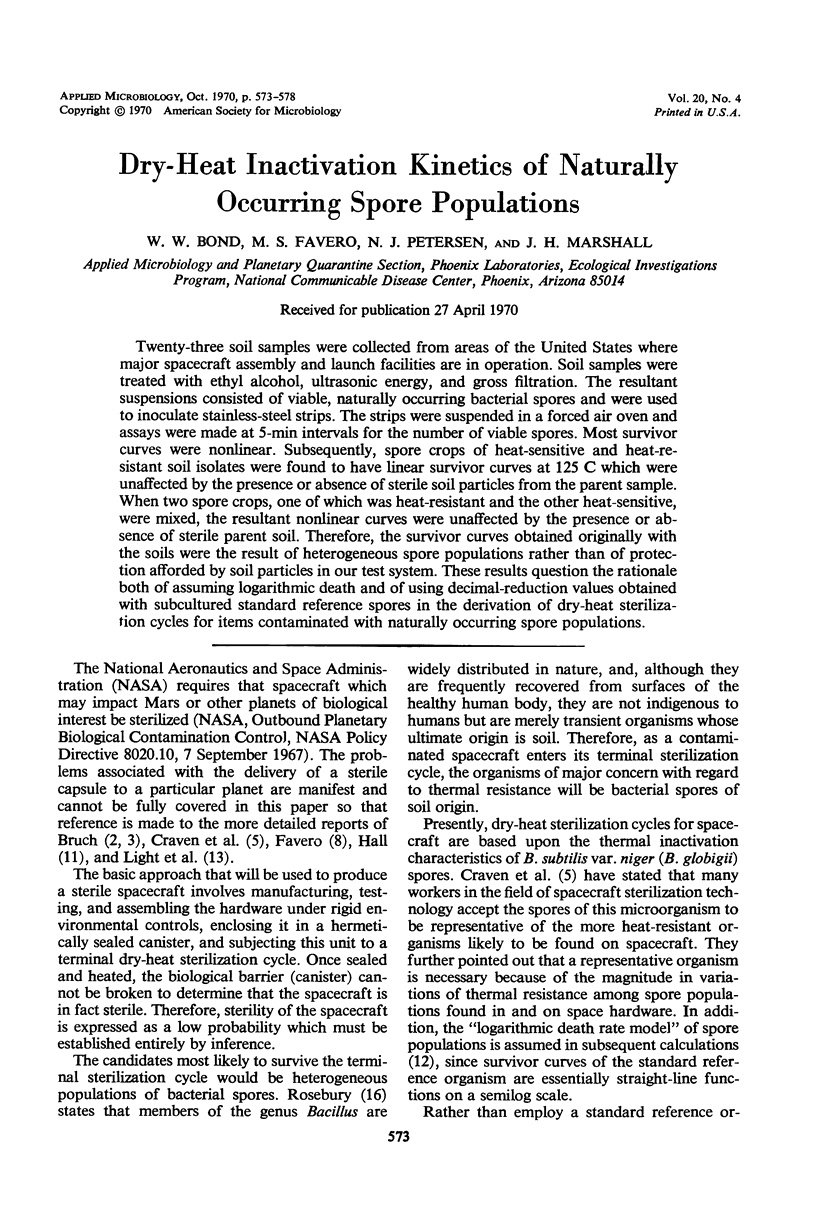
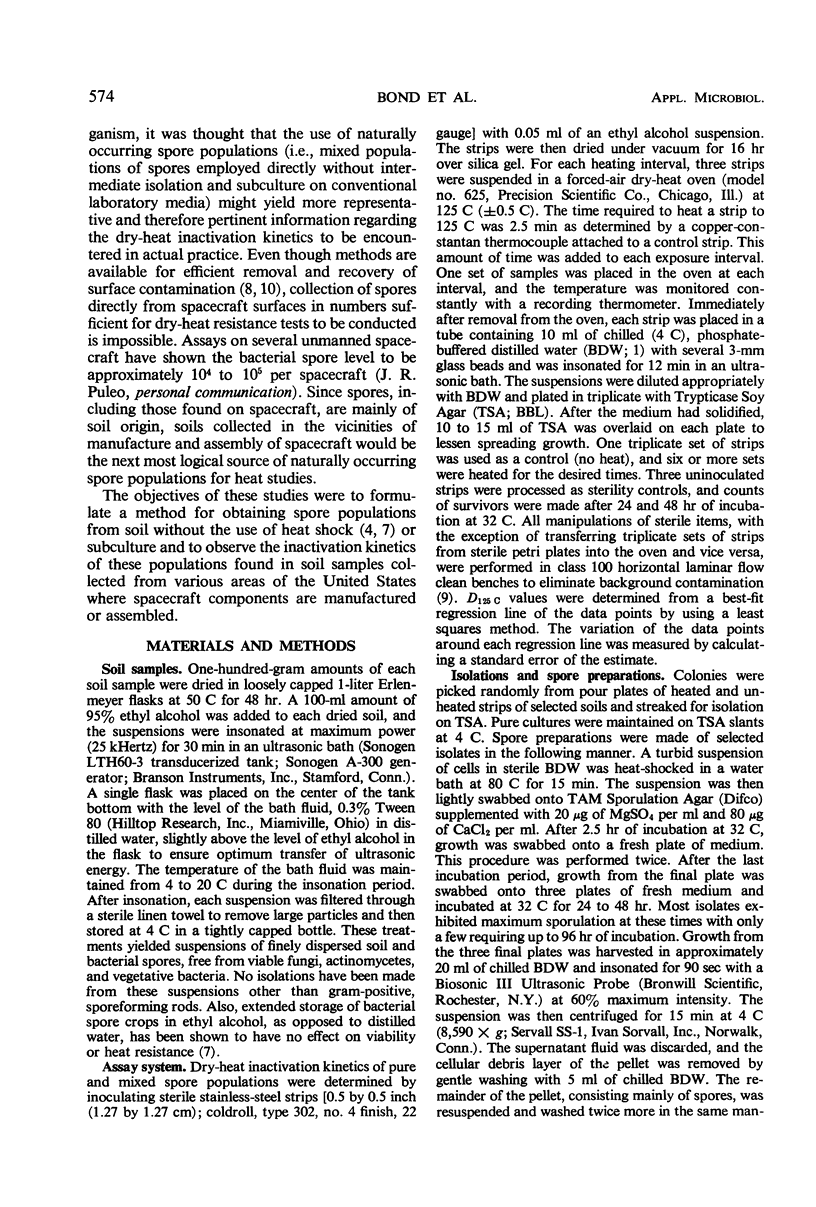
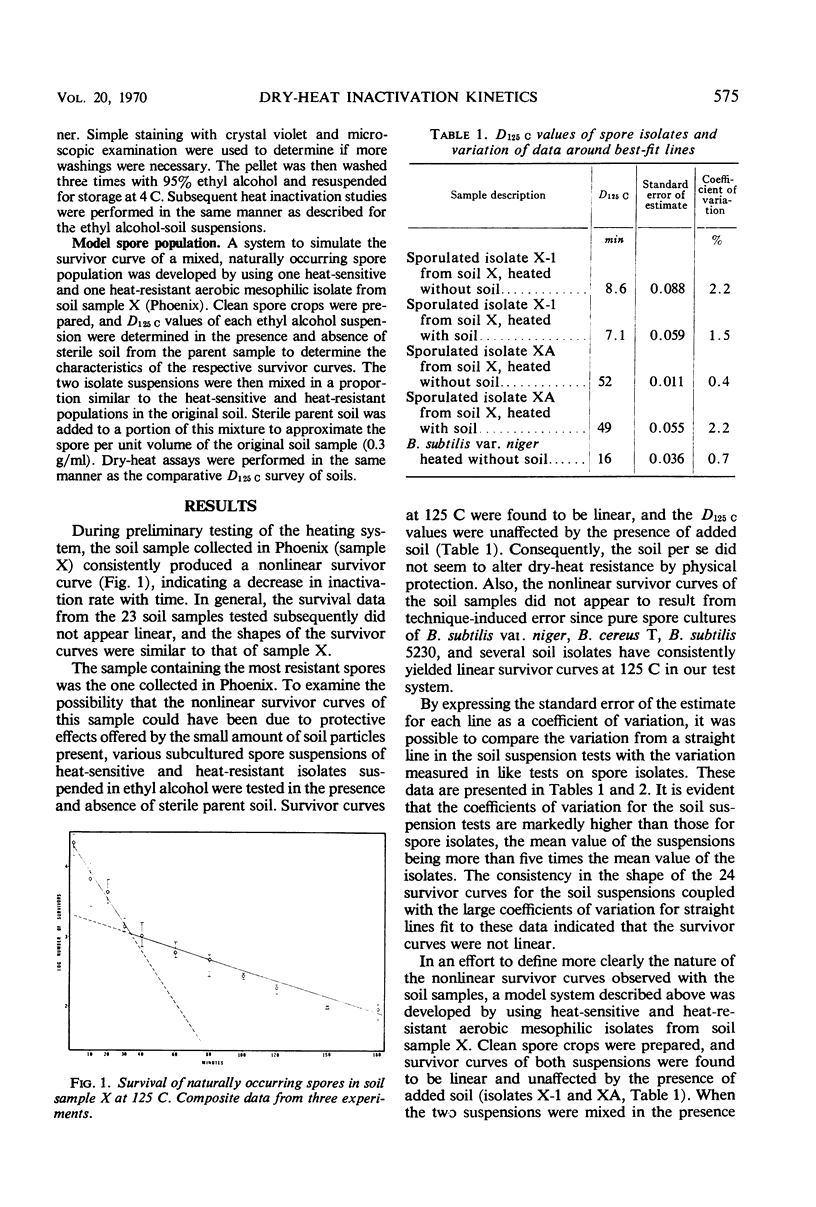

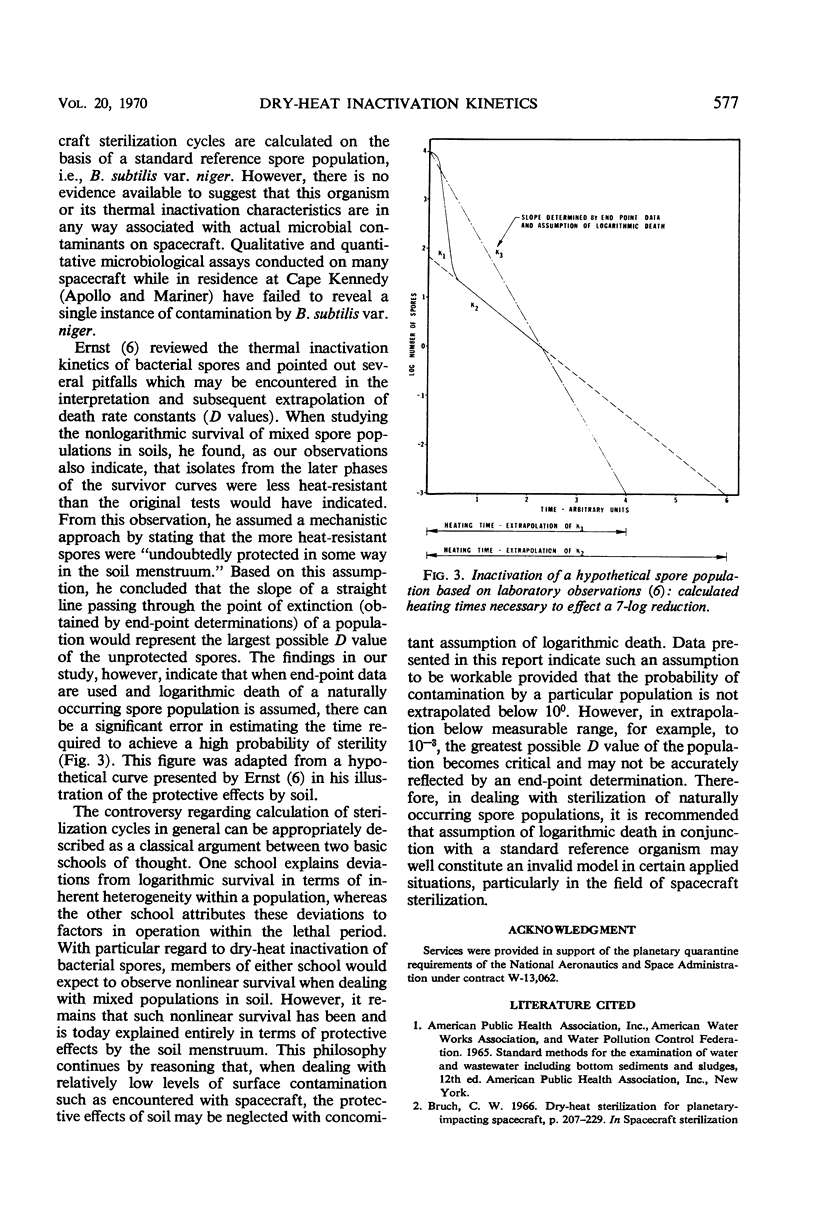
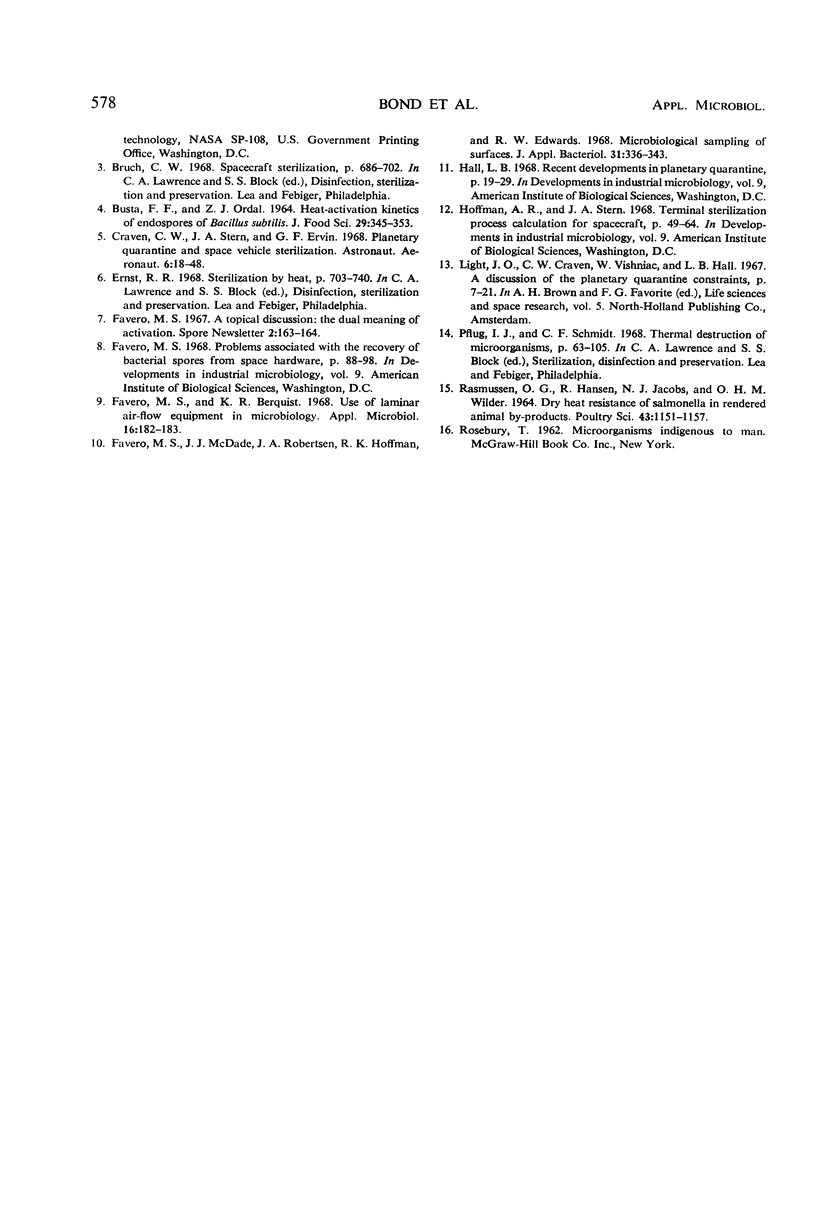
Selected References
These references are in PubMed. This may not be the complete list of references from this article.
- Favero M. S., Berquist K. R. Use of laminar air-flow equipment in microbiology. Appl Microbiol. 1968 Jan;16(1):182–183. doi: 10.1128/am.16.1.182-183.1968. [DOI] [PMC free article] [PubMed] [Google Scholar]
- Favero M. S., McDade J. J., Robertsen J. A., Hoffman R. K., Edwards R. W. Microbiological sampling of surfaces. J Appl Bacteriol. 1968 Sep;31(3):336–343. doi: 10.1111/j.1365-2672.1968.tb00375.x. [DOI] [PubMed] [Google Scholar]


